Feeding your little one is a monumental bonding experience, but it can’t last forever. Eventually, you have to stop bottle-feeding your child and move on to other ways to feed them. This usually entails weaning your baby and giving them a sippy cup instead.
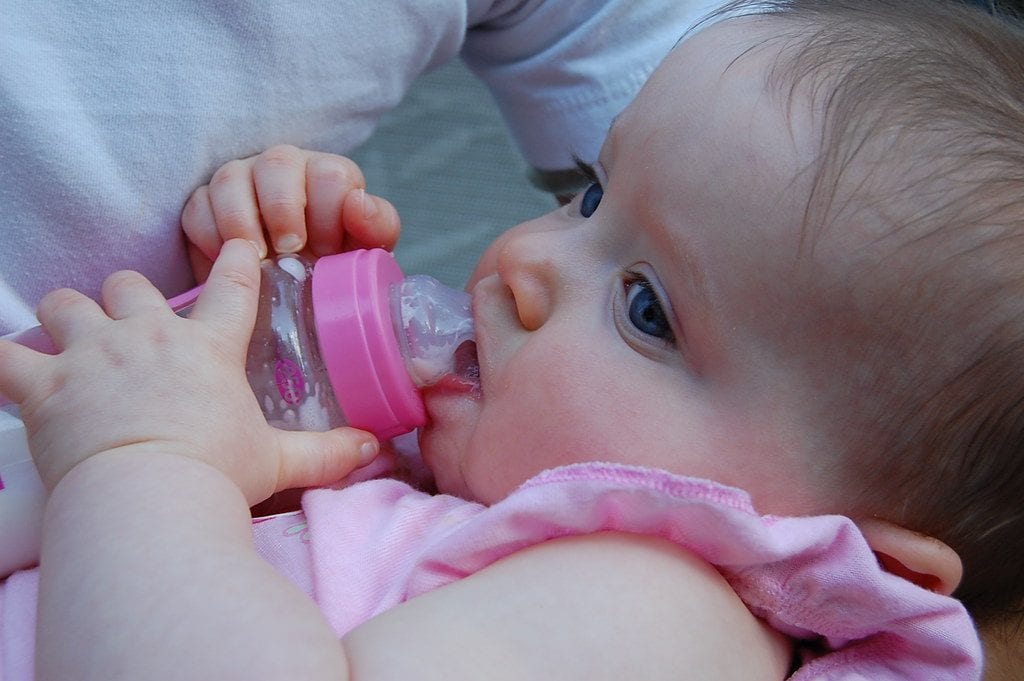
However, your baby may have other plans. Your child has spent a good time being fed directly by you, and they may not like the fact you’re switching them to a big kid cup. How can you wean your baby without it causing a ruckus in the household? It’s hard, but there are ways.
Before we figure out the hows, we encourage you to make sure your baby is ready to be weaned from the bottle in the first place.
Average Time To Wean
Most babies are ready to move to sippy cups around a year to 18 months of age, but they may be able to try drinking from a cup as young as six months. If your child can already sit up, eat their food using a spoon, like solid foods, and have a mealtime routine, it’s usually a sign that they’re ready to be weaned. For an excellent way to get your child to love food, look up some food recipes they would love and encourage them to bond with you while cooking. Your little one would absolutely love that.
Around this age, it’s time to encourage your child to stop drinking from a bottle. Doing so means they will be less likely to have dental problems, and it teaches them how to feed on their own.
Think About It Early
Figuring out when to wean your kid is something you should start thinking about as early as possible. Some parents do a lot of research before their child is even born. As they’re looking at their due date calculator, watching the fetal development of their child, thinking of cute names, combatting pregnancy symptoms, and wondering what giving birth is like, they’re already learning a lot.
(Speaking of names, always pick a name that you love. Don’t pick a name just because it’s popular, and don’t a name just because somebody else likes it.)
It’s essential for you to figure out when the best time to wean is. This can depend on the child. Certain pregnancy complications or disorders, like ADD, ADHD, or similar problems, may delay it. If you’re unsure, talk to your doctor. Otherwise, read these quick tips to transition your children to using big kid cups.
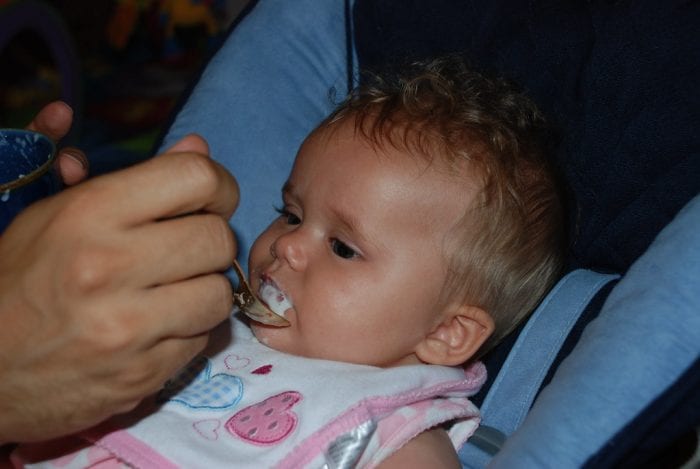
How To Wean
With all that said, what is the best way to wean your child and keep the peace in the household? Let’s find out with these quick tips.
Don’t Wean During A Transition Or Change
Some parents decide to wean their children as they’re learning to do other things like walk or crawl. This is not the way to do it! Starting a major transition during a time when they’re busy learning something else can cause stress, and it makes it harder. They’re not stubborn; there’s just too much going on at once.
You also need to make sure that your baby isn’t in the middle of a move, a vacation, or another life change. If you think you’re unable to handle stress, think about your baby. Also, don’t do it while they’re sick. If they have cold, flu, or other symptoms, try to do it another time.
Start Early
As we said before, a child can try drinking from a cup within six months, sometimes as early as 3. You can still bottle feed, but introduce the idea of a cup early. This can help normalize the idea of a sippy cup and make it easier for them to handle the transition.
Around 8-10 months, continue using the sippy cup. In one feeding, usually the smallest, try to use a sippy cup. Chances are, your child will accept it. Over time, replace the next feedings with cup feedings in their high chair or bed. As you feed them, do it slowly and make sure that they aren’t choking on the liquid. The milk comes out from a cup much differently than a bottle.
Be consistent. When changing up your feeding schedule, continue making that change and don’t mix it up. This can help a baby get used to a sippy cup easier.
Drink From The Cup Yourself
If your child is skeptical about the cup, drink from it a bit yourself. Whenever they sees their parent drinking from the sippy cup, they are more likely to drink from it as well. With that said, make sure you’re drinking something you like. Spitting out a drink may not be the best move, as your child will associate the sippy cup with something disgusting.
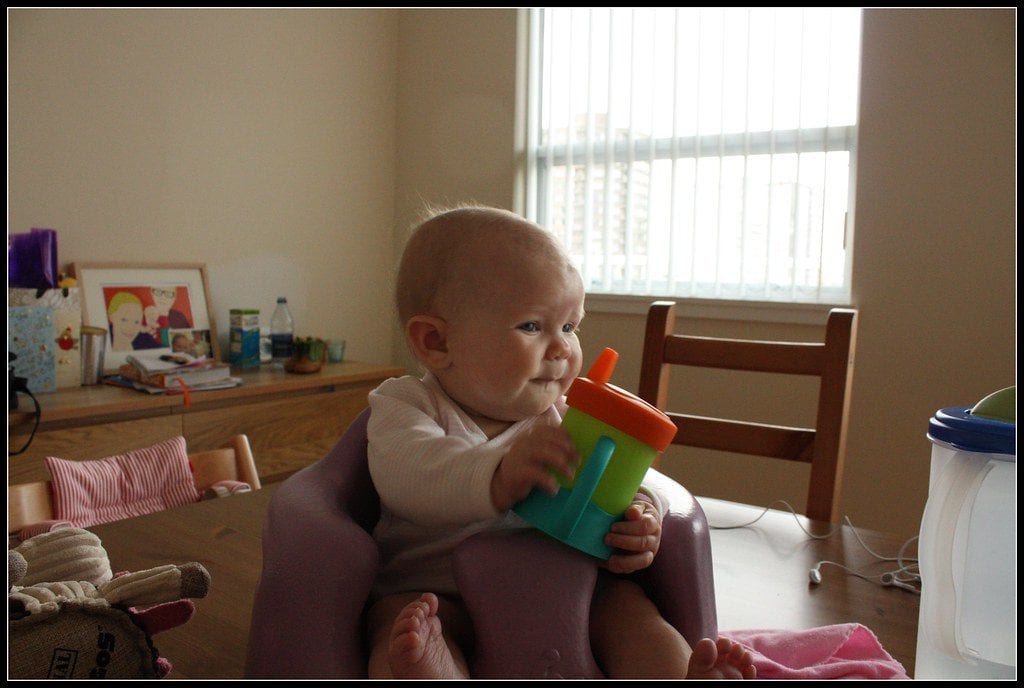
Comfort Your Child
Weaning your child can be challenging, as even when you’re slowly trying to replace feedings, they may feel uncomfortable. As you wean them, play some soft music, give them a toy or stuffed animal, or cuddle them as you are feeding them, especially before bedtime. This can make them comfortable and make it easier to feed them. If you try doing it in a busy environment, it can end up backfiring on you.
Sucking On Other Objects Is Okay
If you notice your child sucking on a pacifier and other safe objects after you wean, it’s nothing to be alarmed about. Many children do this as a way to keep their behavior under control, and they may do this for a few weeks. This can be a suitable replacement for a bottle. It’s of no concern, so just let them suck on a pacifier, thumb, or anything else.
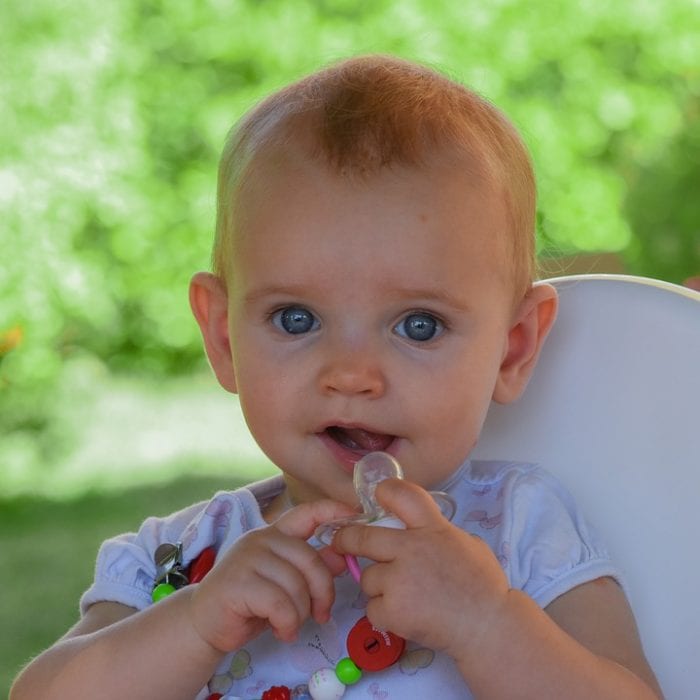
Cold Turkey
It’s important that you don’t try to go cold turkey. Some parents may feel like just taking away the bottle and replacing it with a sippy cup, but the sudden removal may make your child fussy. While they will eventually come through, it’s not worth the screaming, and it’s not good for them, either. Don’t go cold turkey on this. You’re just going to end up having a bad time, with your child screaming and you eventually giving the bottle back.
What To Put In The Cup
Older children can have juice and other liquids, but do note that these may contain extra calories and sugar. The American Academy of Pediatrics also recommends whole cow’s milk for kids in their first and second year. If you are planning on feeding your child cow’s milk, make sure they are older than a year old, and try to introduce it slowly. You may have to mix it up with other liquids, and then gradually introduce it. When you do give them cow milk, make sure it’s whole milk. This is good for their body. Your child needs fats that reduced-fat milk tends to lack.
As for the bottle, it needs to have formula, breast milk, or plain water in it. Avoid putting any other liquids on it. Don’t put any juice. Instead, put the juice in a sippy cup. It may be too sweet for your kid for the first year. In that case, it’s okay for you to water it down a bit. It may be gross to you, but the slight sweetness is better on the child’s palate. Make sure other caregivers are aware of this, too.
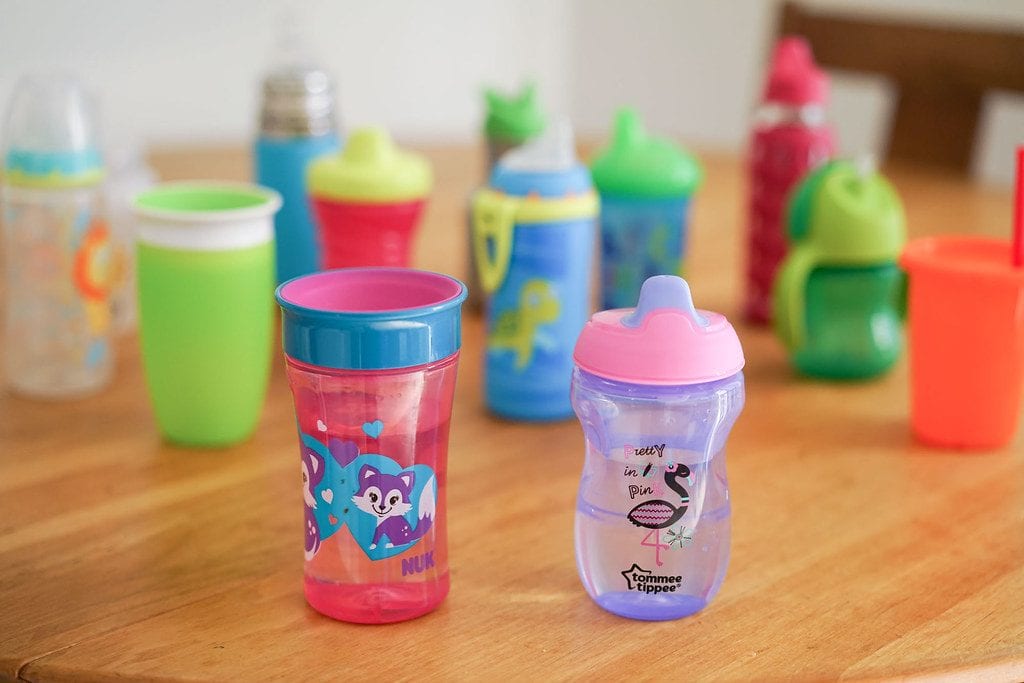
Make Sure The Cup Is Good For Your Child
With that said, buy a sippy cup with a lid that will stay screwed on, handles that are ergonomic, and free of any toxins. Look for one with a weighted base. Don’t be afraid to splurge a bit on the cup in order to give your little one the most comfortable experience possible. This will make them less picky in the long run.
Conclusion
Your child transitioning to using sippy cups is an experience like no other, but it’s something you do need to plan. Figure out the right time to start the process. Give your child a replacement for a bottle. Many kids tend to accept the cup if taught at a young age, but there may be development problems if you keep your child on the bottle and prevent them from eating any baby food.
Weaning Infants Off Bottles FAQs
How Old Should A Baby Stop Using A Bottle?
If you’re wondering when you should start weaning your child, you typically begin saying bye-bye to the bottle around 6-9 months. Every child is different, and some will have prolonged bottle use.
You may wonder why you have to say bye-bye to the bottle right away. Well, once your child learns to crawl and walk, they will typically sip all the time, and this can lead to cavities for liquids besides water. So start around that period, and you’ll soon have a big boy or big girl.
How Do I Wean My Baby Off The Bottle At Night?
There are many ways to wean your child from nighttime bottle feedings. The quickest way is to stop offering them the option. This is the cold turkey method. However, cold turkey is something that can cause a few problems. Mainly the fact that your child will cry and scream for a few days, especially when hungry, but that’s when you can give them extra love.
If you want a gentler way, try diluting the milk. Your baby can risk giving up his bottle if you add more water than milk over time or if you gradually reduce the amount of milk your little one has. Soon, you’ll get the bottle out of sight and switch his diet.
How Do I Start To Wean My 2-Year-Old Child?
Having an older baby who is still using the bottle is a bit problematic, as we can all expect. They’ve become quite attached to the bottle or in the case of breastfed babies, their mom’s milk, and because of that, taking it away is harder, even when they sleep. Toddlers tend to get really angry when their favorite object has to go away, but that’s part of growing up. Again, taking it slow is important, or you may just have to take it away. If they like drinking milk, try milk in a cup, or replace a morning feeding with milk from a cup.
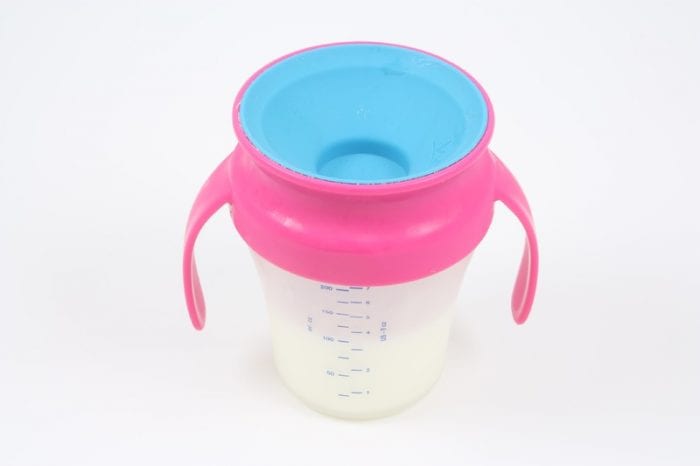
When Should I Stop Giving My Child A Bottle At Night?
You can start weaning your baby from nighttime feedings around 4-6 months, which is a normal time for child development. Again, take a gradual approach to this, and don’t pull away their bottle drinking cold turkey unless you have to. Also, strike a balance between slowly weaning and not giving in to every feeding.
What Is A Good Sippy Cup To Help Your Child Transition?
Any sippy cup will work, but look for one that uses a straw instead of a spout. Too much spout use may lead to oral delays. In addition, you want a sippy cup that is free from any toxins and plastics that could be harmful.
With that said, make sure that your baby isn’t using too much of their sippy cup. Sippy cup drinkers tend to end up needing you to wean them from that as well. Just like prolonged bottle drinking, think about prolonged sippy cup drinking. Again, one way to wean is to dilute the juice with water. Water or juice, it’s your choice.
How Do I Drop Night Feeds?
Dropping night feeds is like dropping any other aspect when it comes to baby development. You can try cold turkey, but your child will not like that, and neither will you. You can have a smaller feeding session, or go from undiluted milk to more diluted milk.
Are Sippy Cups Bad For Teeth?
It all depends on use. Too much use may lead to some teeth problems, but if you do it in moderation and use behavior discipline to get your baby off the sippy cup, it can be a good thing. Plus, teaching a baby how to hold a cup without spilling is a good reason to use a sippy cup, at least for a while.
When Can A Baby Drink From A Straw?
A baby can learn how to drink from a straw in about nine months. Of course, some babies may learn earlier, and vice versa. Most babies will learn how to do it on their own from a cup and drink.
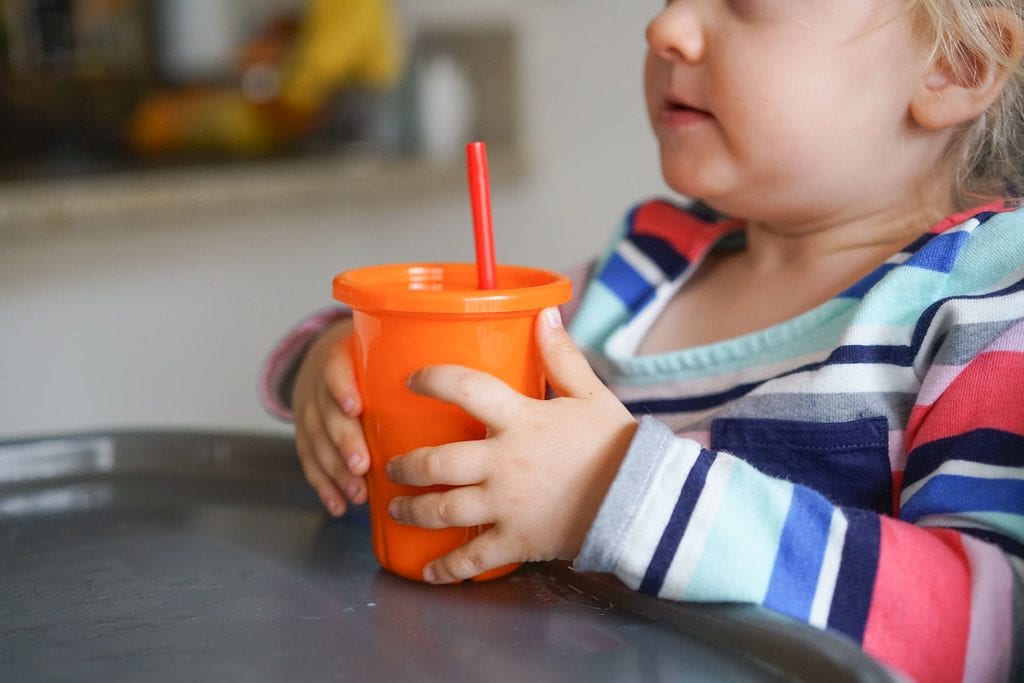
Why Are Bottles Bad For Toddlers?
Some parents don’t want to get rid of the bottle because they say it makes their baby happy, but by that logic, let’s skip potty training because your toddler likes to use the bathroom in their underwear. Prolonged bottle use can lead to many problems, such as tooth decay and having a crutch that the bay can’t get rid of. It’s important that you allow your baby to transition to a big kid: more solid food, fewer bottles. Phasing out the bottle is something you should do at a young age, despite how many mothers or celebrity parents swear by their toddler and their bottle. Teach your baby how to drink from their own cup with a screw on lid early for a healthy transition.
What Is The Process Of Weaning?
Weaning is when the mother stops feeding the baby with breast milk. In typical situations, it can also mean the introduction of complementary foods alongside breast milk or infant formula to a 6-month-old toddler.
Can A Baby Self-Wean From A Bottle?
What Happens If A Child Uses A Bottle Too Long?
Do Baby Bottles Affect Speech?
Why No Bottles After A Year?
What Age Does Bottle Mouth Syndrome Start?
Last Updated on May 12, 2023 by Jeanne Meets
DISCLAIMER (IMPORTANT): This information (including all text, images, audio, or other formats on FamilyHype.com) is not intended to be a substitute for informed professional advice, diagnosis, endorsement or treatment. You should not take any action or avoid taking action without consulting a qualified professional. Always seek the advice of your physician or other qualified health provider with any questions about medical conditions. Do not disregard professional medical advice or delay seeking advice or treatment because of something you have read here a FamilyHype.com.